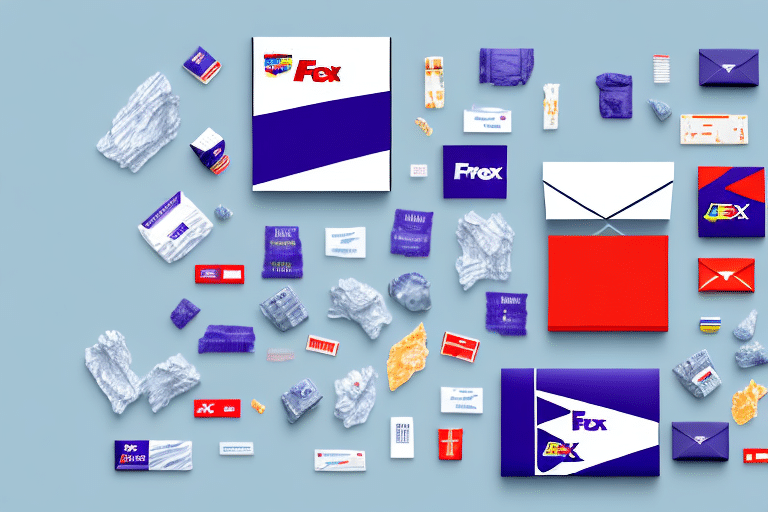Comparing FedEx Flat Rate vs USPS: Which Shipping Option is Right for You?
Shipping is a crucial aspect of any business, ensuring that customers receive their orders promptly and reliably. Among the plethora of shipping options available, FedEx Flat Rate and USPS stand out as two of the most popular choices. Each offers distinct advantages and disadvantages, making the selection process a challenge for businesses. This guide provides an in-depth comparison to help you determine which shipping service aligns best with your business needs.
Shipping Costs: FedEx Flat Rate vs USPS
Cost is often the primary consideration when selecting a shipping option. FedEx Flat Rate provides a predictable pricing structure, charging a fixed rate based on the size of the package, irrespective of its weight or destination. This can be advantageous for businesses shipping heavier items or sending packages over long distances.
In contrast, USPS calculates shipping costs based on several factors: weight, distance, and package dimensions. Generally, USPS tends to be more economical for lighter and smaller packages. For example, according to the 2023 USPS pricing update, First-Class Mail remains a cost-effective option for packages under 13 ounces.
Additionally, both carriers offer various add-on services that can influence overall shipping costs. FedEx offers options like Saturday delivery and signature confirmation, which may increase the shipping price. USPS provides services such as insurance and delivery confirmation for an additional fee. When evaluating costs, it's essential to consider both the base rates and any necessary add-ons to ensure comprehensive budgeting.
Shipping Speeds: FedEx Flat Rate vs USPS
Delivery speed is another critical factor influencing the choice between FedEx Flat Rate and USPS. FedEx is renowned for its expedited shipping options, offering guaranteed delivery within specific timeframes. For instance, FedEx FedEx Ground typically delivers within 1-5 business days, while FedEx Express services can provide next-day or two-day delivery options.
On the other hand, USPS Priority Mail generally delivers within 1-3 business days, making it competitive for many shipping needs. For time-sensitive shipments, USPS offers Priority Mail Express, which guarantees overnight delivery to most U.S. destinations. However, unlike FedEx, USPS does not always guarantee a precise delivery window outside of Express services.
The choice between these carriers may depend on how critical delivery times are for your business operations and customer satisfaction.
Features and Services: A Detailed Comparison
Packaging Options
FedEx Flat Rate offers a variety of packaging solutions, including boxes, envelopes, and tubes, all available at a fixed rate. This uniformity simplifies the shipping process, especially for businesses dealing with standardized package sizes. In contrast, USPS provides a broader range of packaging options tailored to different needs, including PO Box deliveries, which FedEx does not support.
Tracking and Insurance
Both FedEx and USPS offer robust tracking systems. FedEx provides real-time tracking updates through their website and mobile app, enhancing visibility throughout the shipping process. USPS tracking is also reliable, especially with Priority Mail and Express services, but some users report less frequent updates compared to FedEx.
Regarding insurance, USPS offers up to $5,000 in insurance for Priority Mail Express, while FedEx provides insurance options based on the declared value of the package. It's important to assess the value of your shipments and choose a carrier that offers adequate protection.
Customer Service: FedEx vs USPS
Customer service quality can significantly impact the shipping experience. FedEx is often praised for its responsive support, offering multiple channels such as phone, email, and live chat to address customer inquiries and issues promptly. Their comprehensive online resources and proactive customer support contribute to higher customer satisfaction rates.
In contrast, USPS customer service has mixed reviews. While they provide assistance through phone and in-person at local post offices, some customers experience longer wait times and limited support options. This discrepancy can influence businesses that prioritize responsive and accessible customer service.
Choosing the Right Shipping Option for Your Business
Selecting between FedEx Flat Rate and USPS depends on various factors tailored to your business's unique needs:
- Package Size and Weight: FedEx Flat Rate is ideal for larger, heavier packages, whereas USPS is cost-effective for smaller, lighter items.
- Delivery Speed: If guaranteed fast delivery is essential, FedEx's expedited services might be preferable.
- Budget Constraints: For businesses aiming to minimize shipping costs on smaller orders, USPS offers competitive rates.
- Additional Services: Consider necessities like insurance, signature confirmation, and pickup services offered by each carrier.
- Customer Preferences: Reflect on what your customers value more—speed, cost, or reliability—and choose accordingly.
Conducting a thorough analysis of your shipping volume, patterns, and customer expectations will guide you in making an informed decision that aligns with your business objectives.
Tracking and Managing Shipments
Effective shipment tracking is paramount for maintaining transparency and customer trust. Both FedEx and USPS offer comprehensive tracking systems:
- FedEx: Provides real-time tracking accessible via their website and mobile app. Notifications about shipment status changes can be set up to keep both sender and recipient informed.
- USPS: Offers tracking for all major shipping services through their website. Customers can monitor their packages by entering the tracking number provided at checkout.
Leveraging these tracking tools can enhance your business operations by enabling proactive communication with customers regarding their order status.
Conclusion: Making the Best Choice for Your Business
Deciding between FedEx Flat Rate and USPS requires a balanced consideration of cost, speed, service features, and customer support. FedEx Flat Rate excels in providing predictable pricing and expedited delivery options, making it suitable for businesses shipping larger or time-sensitive packages. Conversely, USPS offers cost-effective solutions for smaller shipments and provides convenient services like PO Box deliveries and free package pickups.
By evaluating your business's specific shipping needs and aligning them with the strengths of each carrier, you can optimize your shipping strategy to enhance efficiency and customer satisfaction. For more detailed information on shipping rates and services, refer to the official FedEx Shipping Services and USPS Shipping Services pages.






















